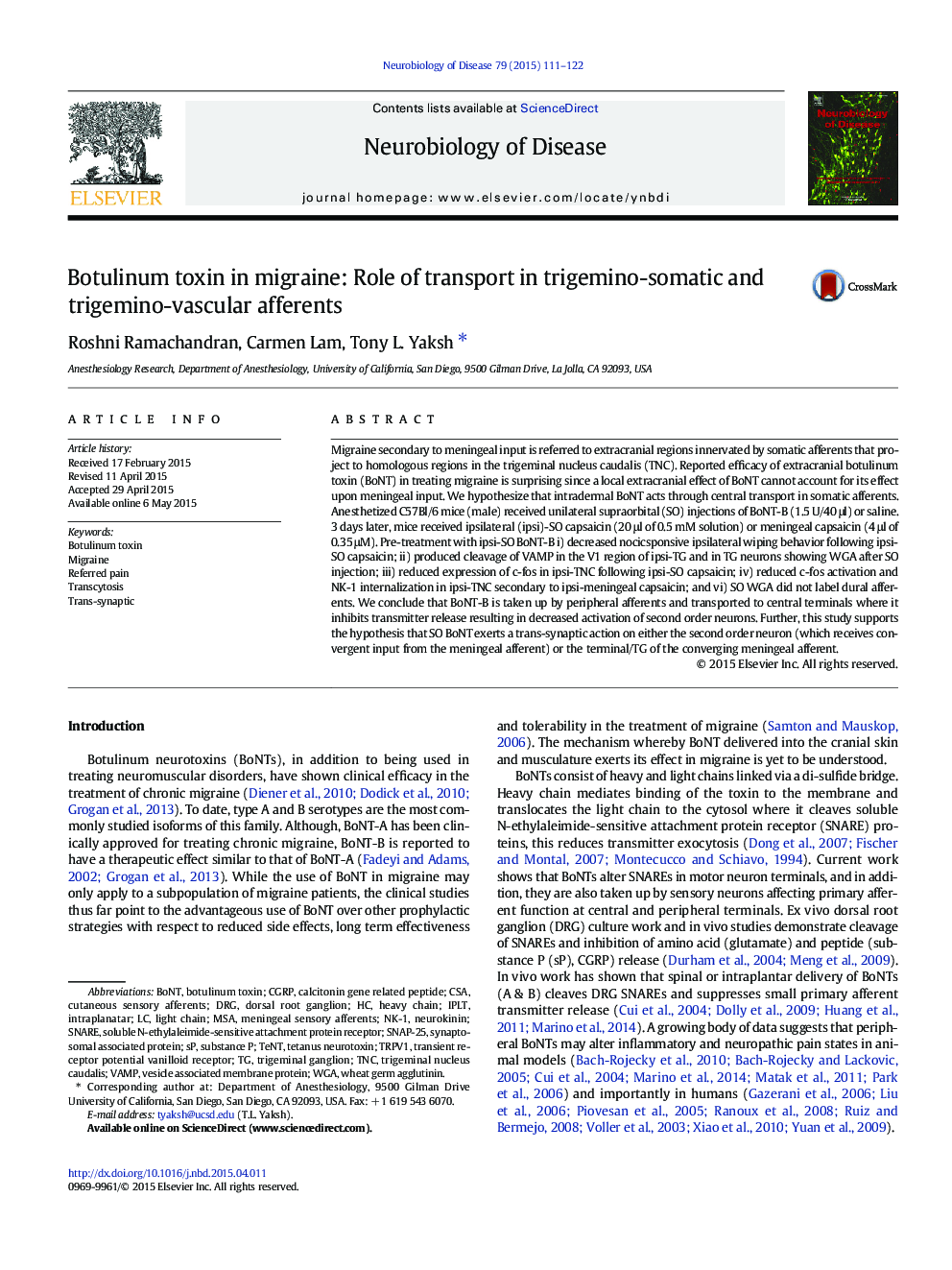| Article ID | Journal | Published Year | Pages | File Type |
|---|---|---|---|---|
| 3069289 | Neurobiology of Disease | 2015 | 12 Pages |
•This study presents mechanism of action of BoNT-B using trigeminal sensitization migraine model.•BoNT-B is taken up by peripheral afferents and transported to central terminals.•Supraorbital BoNT-B exerts a trans-synaptic action on meningeal input into the nucleus caudalis.•This effect is either on the second order neuron or the terminal of the converging meningeal afferent.
Migraine secondary to meningeal input is referred to extracranial regions innervated by somatic afferents that project to homologous regions in the trigeminal nucleus caudalis (TNC). Reported efficacy of extracranial botulinum toxin (BoNT) in treating migraine is surprising since a local extracranial effect of BoNT cannot account for its effect upon meningeal input. We hypothesize that intradermal BoNT acts through central transport in somatic afferents. Anesthetized C57Bl/6 mice (male) received unilateral supraorbital (SO) injections of BoNT-B (1.5 U/40 μl) or saline. 3 days later, mice received ipsilateral (ipsi)-SO capsaicin (20 μl of 0.5 mM solution) or meningeal capsaicin (4 μl of 0.35 μM). Pre-treatment with ipsi-SO BoNT-B i) decreased nocicsponsive ipsilateral wiping behavior following ipsi-SO capsaicin; ii) produced cleavage of VAMP in the V1 region of ipsi-TG and in TG neurons showing WGA after SO injection; iii) reduced expression of c-fos in ipsi-TNC following ipsi-SO capsaicin; iv) reduced c-fos activation and NK-1 internalization in ipsi-TNC secondary to ipsi-meningeal capsaicin; and vi) SO WGA did not label dural afferents. We conclude that BoNT-B is taken up by peripheral afferents and transported to central terminals where it inhibits transmitter release resulting in decreased activation of second order neurons. Further, this study supports the hypothesis that SO BoNT exerts a trans-synaptic action on either the second order neuron (which receives convergent input from the meningeal afferent) or the terminal/TG of the converging meningeal afferent.
